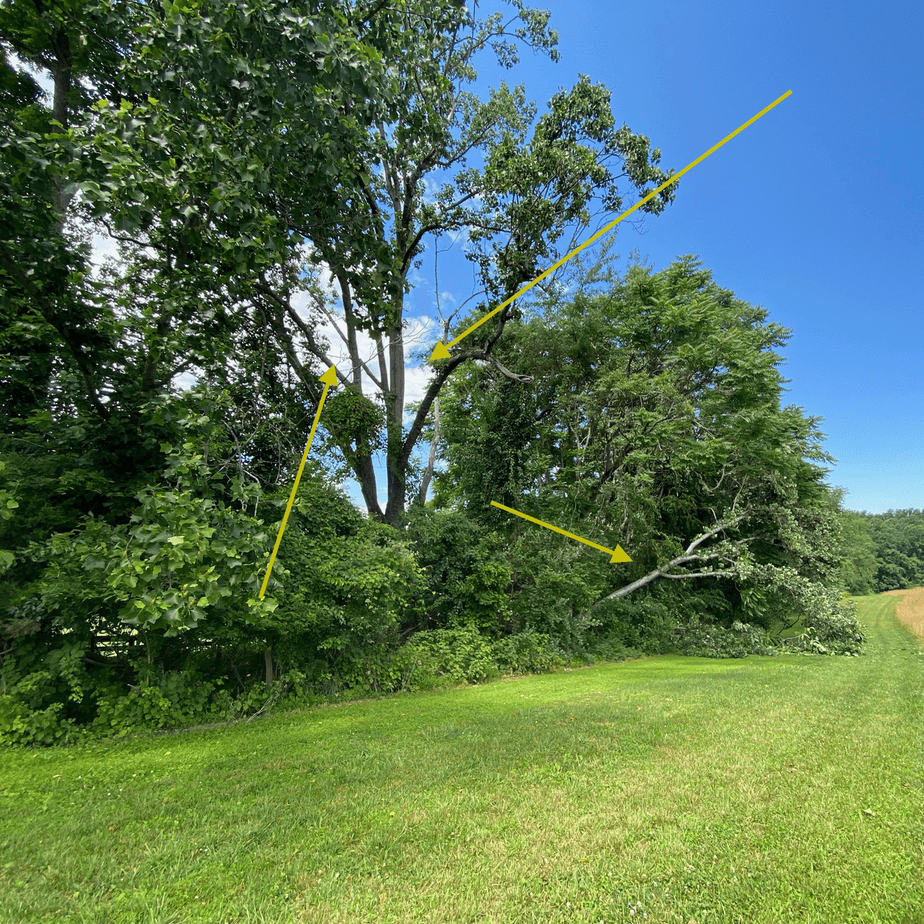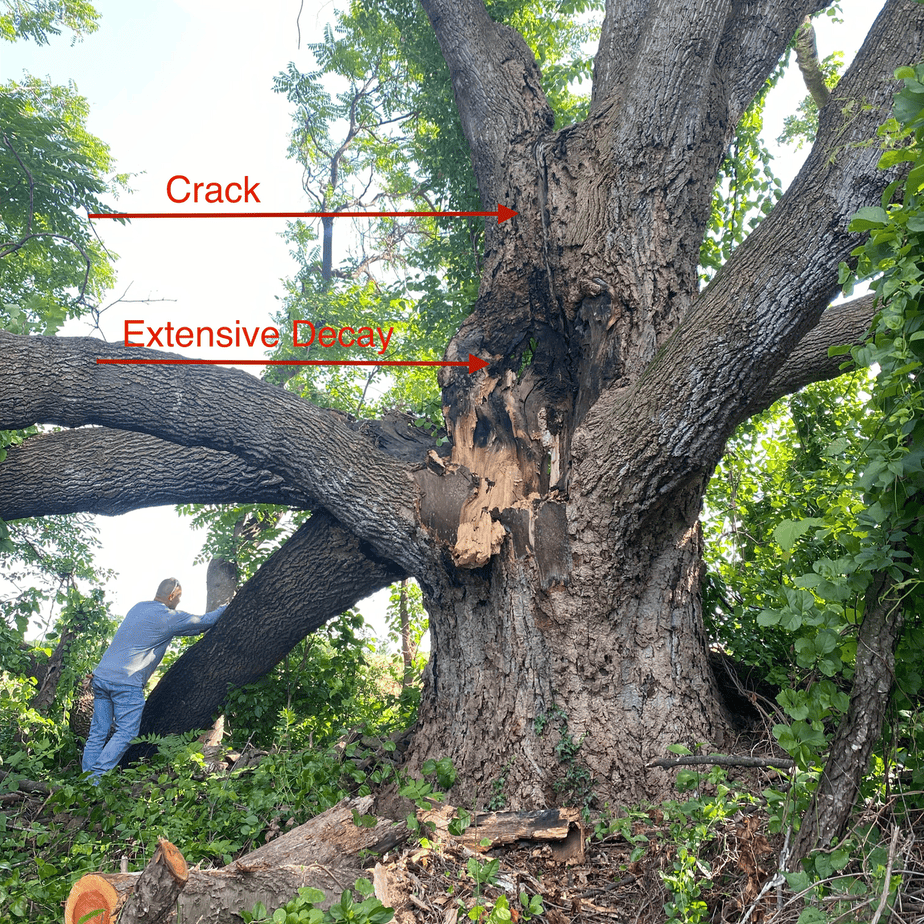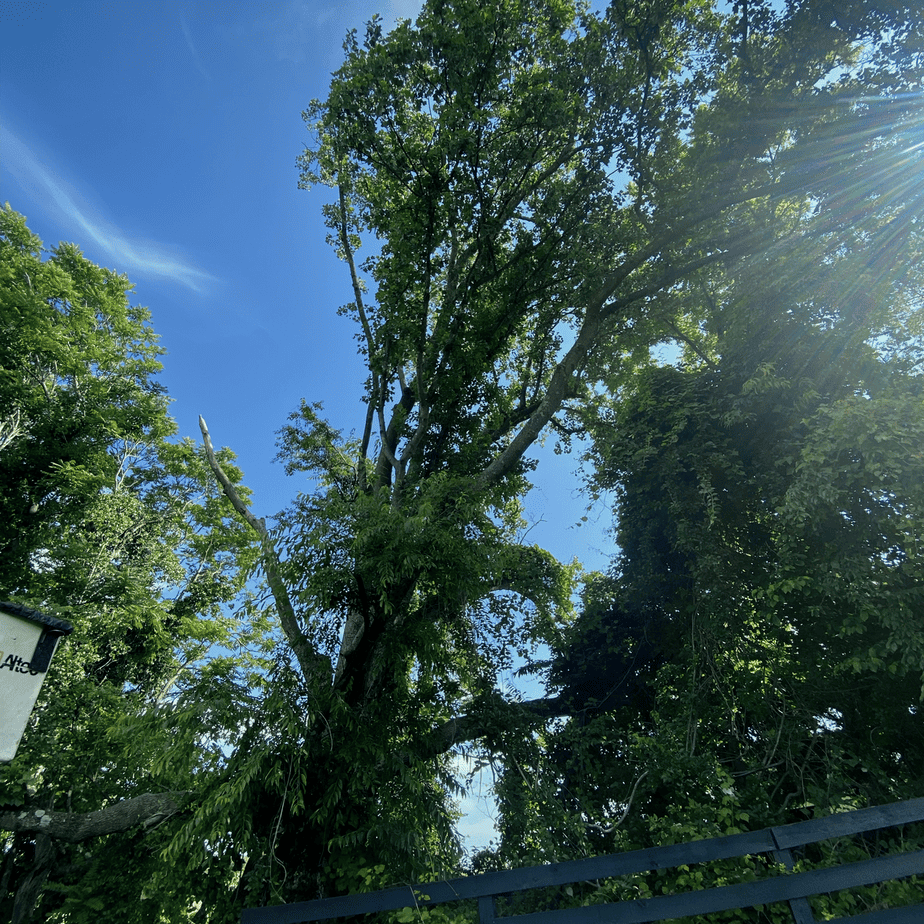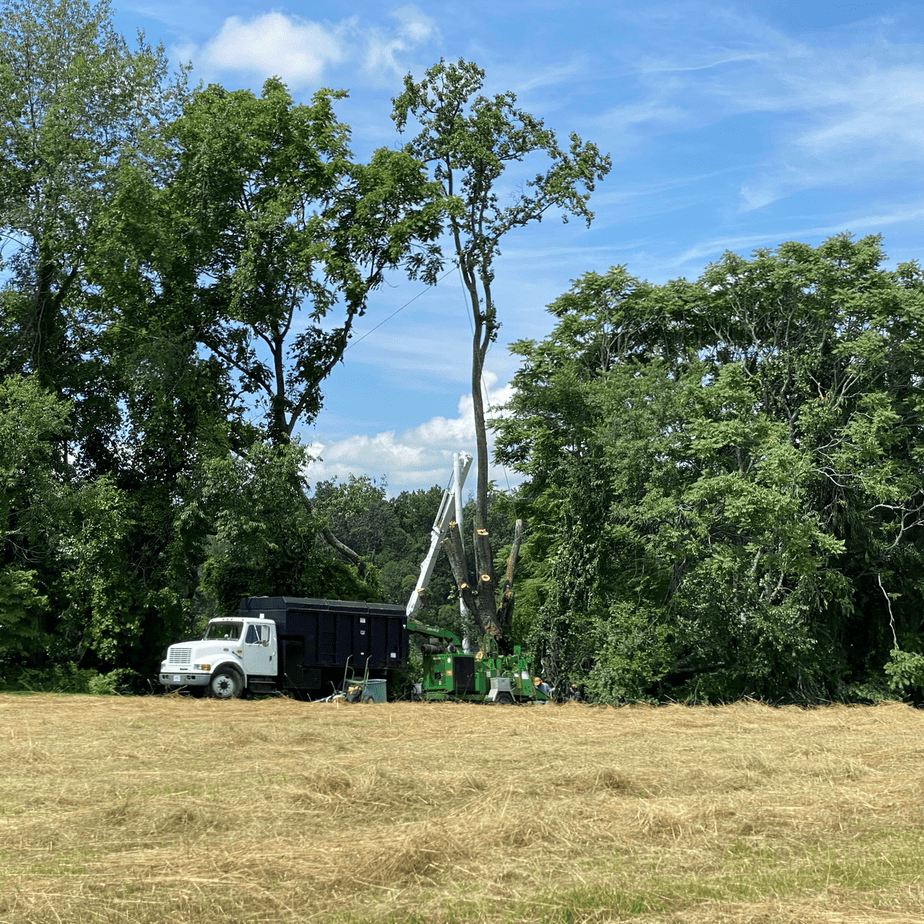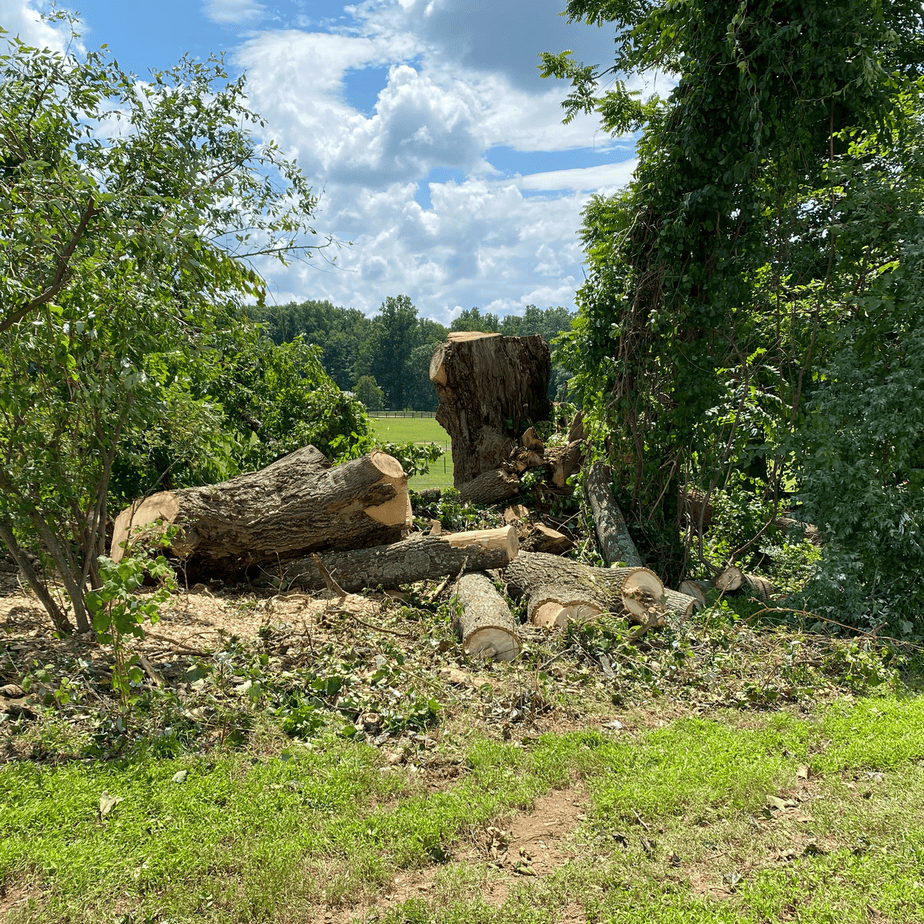Removing trees with cracks can be dangerous. Trees with large cracks are at risk of failure. This one is a good case in point. The neighbor called and asked me if I had seen the limbs down on the large poplar tree that sits on our joint fence line. The above photo is the tree from our side of the fence. It is huge. The leads are as large as many trees. A couple of the leads fell in the her yard last week. I believe the one's on my side fell after that. Anyway, she wanted to remove the tree before it caused more damage on her side.
I am always looking for good blog posts. This is a great one! Read on to see the split, the decay, and the removal.
Crack, Decay, and Perspective
This photo is from the neighbor's side. She had already cleaned up the leads that fell earlier.
It is always hard to tell how big a tree is without some familiar object to compare it to. As you can see, Francisco is standing next to one of the large leads that cracked off.
The tree has a large, old crack in the center. Because it has multiple leads coming from a central trunk, there is more chance of decay at those attachment points. It's easy for water to collect in the crotches.
Top of Poplar Tree With Crack
This photo is from the neighbor's side. As you can see, the majority of the tree leans towards her side. Her side has a riding ring and board fences in close proximity. As a result, we chose to lower the top into the field on our side. Only the bucket truck was on the neighbor's side.
Removing Trees with Cracks: Strategically Lowering the Large Leads
If you look closely, you can see that the large center lead is stabilized with a rope. First, the remainder of the leads were lowered down with ropes. Finally, the large center lead was lowered to the ground. All of the actual cleanup was done in the field.
